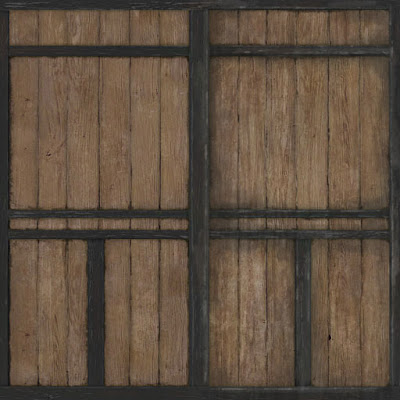Education : no28 'Normals advise for multiple element maps'
If you have different elements in your texture sheet, such as metal and wood, make sure to use the nvidia filter on elements individually. If you just desaturate a few diffuse layers and only use the filter once you will have the same nvidia filter scale for everything. When really wood and metal can require different scales to achieve the best results.
Right, am off to start playing GTA4 now. Might be a while till the next update ;)
Tuesday, 29 April 2008
Monday, 28 April 2008
Random : no8 'XNView'
Using the standard windows explorer to view images can be slow and problematic. XNView is one of the better image viewers out there, you can map certain folders to your favourites list. I'll usually have favourites set to my references, inspiration folder, textures folder etc. Available for free if you're not using it for commercial reasons.
http://www.xnview.com/
Using the standard windows explorer to view images can be slow and problematic. XNView is one of the better image viewers out there, you can map certain folders to your favourites list. I'll usually have favourites set to my references, inspiration folder, textures folder etc. Available for free if you're not using it for commercial reasons.
http://www.xnview.com/
Sunday, 20 April 2008
Education : no27 'Finishing Textures'
Can't quite explain why but when working on a texture for days on end, day after day, you can get it in your head that the final texture is finished and will move on. You should always stick some adjustment layers to the top of your diffuse/spec laters such as levels and hue/saturation. It is likely you will not need to adjust the bars that much, just a few digits here and there. By doing this you can often find that by doing this your texture actually wasn't quite right before. Sharpening tools can also help a lot at this stage but be subtle and look at the texture carefully to make sure it hasn't 'damaged' any of it.
Can't quite explain why but when working on a texture for days on end, day after day, you can get it in your head that the final texture is finished and will move on. You should always stick some adjustment layers to the top of your diffuse/spec laters such as levels and hue/saturation. It is likely you will not need to adjust the bars that much, just a few digits here and there. By doing this you can often find that by doing this your texture actually wasn't quite right before. Sharpening tools can also help a lot at this stage but be subtle and look at the texture carefully to make sure it hasn't 'damaged' any of it.
Monday, 7 April 2008
Flashback : no5 'Unreal3 Map redo'
So below is an image showing wooden planks, on the left is the original texture I did and on the right I spent about 5 minutes quickly throwing in a few basic improvements just to give you an idea of what I would do if I were to do this again.
1. The dirt gather under the planks on the front was originally just intense and small. I added more by bringing out at lower opacity to give the texture more depth. Before, it just looked too flat.
2. Added an overlay using an image of water drips. This gives the texture more life and adds more tones. Before the lighter wood pieces had hardly any colour variation. This helps to break up the texture.
3. The edgework on the darker planks were originally more or less the same width. Here I added more lighter patchy areas (lower opacity) to break it up a bit more so its not just dark/light. There is now more ranges of tones making it seem much more natural.

So below is an image showing wooden planks, on the left is the original texture I did and on the right I spent about 5 minutes quickly throwing in a few basic improvements just to give you an idea of what I would do if I were to do this again.
1. The dirt gather under the planks on the front was originally just intense and small. I added more by bringing out at lower opacity to give the texture more depth. Before, it just looked too flat.
2. Added an overlay using an image of water drips. This gives the texture more life and adds more tones. Before the lighter wood pieces had hardly any colour variation. This helps to break up the texture.
3. The edgework on the darker planks were originally more or less the same width. Here I added more lighter patchy areas (lower opacity) to break it up a bit more so its not just dark/light. There is now more ranges of tones making it seem much more natural.

Subscribe to:
Posts (Atom)

